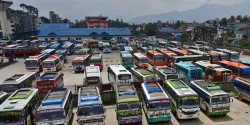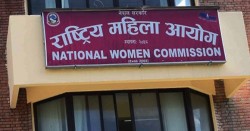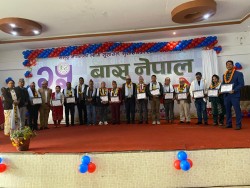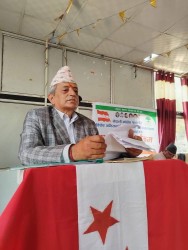Nepal, a land of breathtaking natural beauty, is also home to a complex healthcare landscape. The country faces numerous health challenges, ranging from infectious diseases to limited healthcare infrastructure. In this context, medical microbiologists play a pivotal role in diagnosing diseases, conducting research, and contributing to public health initiatives. This article delves into the multifaceted role of medical microbiologists in Nepal’s healthcare sector, exploring their significance, challenges, and potential for future development.
Introduction
Nepal, nestled in the Himalayas, is renowned for its majestic landscapes and vibrant culture. However, beyond the picturesque scenery lies a healthcare landscape marked by numerous challenges. The nation grapples with infectious diseases, limited access to healthcare facilities in remote areas, and a scarcity of resources. In the midst of these challenges, medical microbiologists stand as unsung heroes, working diligently to safeguard public health.
Medical Microbiology: A Comprehensive Overview
Medical microbiology is a branch of science that deals with the study of microorganisms and their impact on human health. It encompasses various subfields, including bacteriology, virology, mycology, and parasitology. In healthcare, medical microbiologists are primarily concerned with the identification and diagnosis of infectious diseases. They are the detectives of the microbial world, using their expertise to identify pathogens and understand their behavior.
The State of Healthcare in Nepal
Before delving into the role of medical microbiologists, it is essential to grasp the state of healthcare in Nepal. Despite significant progress in recent years, Nepal’s healthcare system faces several challenges:
Limited Healthcare Infrastructure: Many remote areas lack access to basic healthcare facilities, making timely diagnosis and treatment difficult.
Prevalence of Infectious Diseases: Nepal is prone to infectious diseases like tuberculosis, malaria, and waterborne illnesses due to its geographical and environmental factors.
Resource Constraints: Limited funding and resources hinder the development of healthcare infrastructure and research capabilities.
The Role of Medical Microbiologists in Disease Diagnosis
Medical microbiologists play a critical role in identifying and diagnosing infectious diseases, which are a significant health concern in Nepal. Their responsibilities include:
Laboratory Testing: Conducting various tests, such as bacterial cultures, PCR (Polymerase Chain Reaction), and serological assays, to identify pathogens.
Outbreak Investigation: Rapid response during disease outbreaks, helping contain the spread of infections.
Antimicrobial Susceptibility Testing: Determining the susceptibility of pathogens to antibiotics, aiding in effective treatment.
Public Health Surveillance: Monitoring the prevalence of infectious diseases and providing data for public health policies.
One notable example of their impact is in the fight against tuberculosis (TB). Medical microbiologists are instrumental in diagnosing TB cases, conducting drug susceptibility testing, and contributing to TB control programs.
Microbiologists in Research and Development
Beyond diagnosis, medical microbiologists in Nepal are actively involved in research and development efforts. This involves:
Drug Discovery: Research into new antibiotics and antiviral drugs, particularly relevant in the face of antimicrobial resistance.
Vaccine Development: Contributing to the development of vaccines against prevalent diseases in Nepal, such as hepatitis, typhoid, and influenza.
Epidemiological Studies: Investigating disease patterns, transmission dynamics, and risk factors, which informs public health strategies.
One remarkable achievement is the development of a locally-produced typhoid vaccine, Tybar-TCV, which is crucial in combating the high incidence of typhoid fever in Nepal.
Capacity Building and Training
To sustain and expand their impact, medical microbiologists are actively involved in educating the next generation of professionals. This includes:
Training Healthcare Workers: Conducting workshops and training programs to enhance the skills of healthcare personnel in remote areas.
Academic Institutions: Teaching microbiology courses in medical schools and universities, nurturing future experts.
Mentoring Research: Guiding students in research projects to foster scientific inquiry.
The goal is to build a skilled workforce that can address Nepal’s unique healthcare challenges.
Challenges Faced by Medical Microbiologists in Nepal
Despite their crucial role, medical microbiologists in Nepal face numerous challenges:
Resource Constraints: Limited funding for laboratories, equipment, and research impedes their work.
Workforce Shortage: There is a shortage of trained medical microbiologists, particularly in rural areas.
Lack of Policy Support: A lack of clear policies and guidelines hampers the development of the field.
Addressing these challenges is essential to harness the full potential of medical microbiologists in Nepal.
Success Stories and Case Studies
Highlighting the contributions of medical microbiologists through success stories and case studies can provide valuable insights into their work:
The Battle Against COVID-19: Medical microbiologists played a pivotal role in COVID-19 testing, contact tracing, and public health guidance during the pandemic.
Tackling Drug-Resistant Infections: Their efforts in identifying and managing drug-resistant infections, such as multidrug-resistant TB, have saved lives.
Innovative Research: Showcase innovative research projects, like the development of affordable diagnostic tools for resource-constrained settings.
These stories underscore the impact of medical microbiologists in Nepal’s healthcare system.
The Way Forward
To maximize the contribution of medical microbiologists in Nepal’s healthcare sector, several steps can be taken:
Investment in Infrastructure: Increase funding for laboratory infrastructure and equipment.
Education and Training: Expand training programs for medical microbiologists and healthcare workers.
Policy Development: Develop clear policies and guidelines to support the field.
International Collaboration: Foster collaboration with international organizations and experts for knowledge exchange.
Public Awareness: Raise awareness about the role of medical microbiologists and the importance of vaccinations and disease prevention.
Conclusion
In Nepal’s healthcare sector, medical microbiologists are the silent heroes working diligently to combat infectious diseases and improve public health. Their role in disease diagnosis, research, and capacity building is indispensable. However, they face challenges stemming from resource constraints and workforce shortages. To ensure a healthier future for Nepal, it is essential to recognize the critical role of medical microbiologists and provide them with the support and resources they need to continue their vital work.






-1765346713.jpg)



